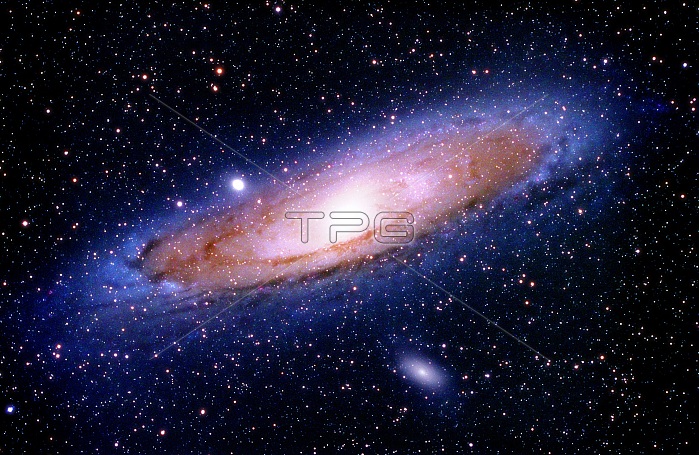
The Andromeda Galaxy is a gigantic collection of more than 300 billion stars. Easily visible from a dark site, it is probably the farthest object that can be seen with the unaided eye, at a distance of about 2.93 million light years. Companion dwarf elliptical galaxies M32 and M110 are also visible, as well as NGC 206, a stellar association located inside of M31 and seen here as a bright knot of stars in the outer spiral arm at lower left. With the Hubble Space Telescope, it has been discovered that M31 has a double nucleus, probably because of an encounter with a smaller galaxy in the local group that it consumed. M31 is a member of our local group of galaxies. which also contains the Milky Way, Magellanic Clouds, and M33. In this photo, two different types of stellar populations are well differentiated. Young blue population I stars are seen in the outer arms, and old population II stars are seen as reddish colored in the central bulge of the galaxy.
| px | px | dpi | = | cm | x | cm | = | MB |
Details
Creative#:
TOP22308699
Source:
達志影像
Authorization Type:
RM
Release Information:
須由TPG 完整授權
Model Release:
N/A
Property Release:
No
Right to Privacy:
No
Same folder images:

 Loading
Loading